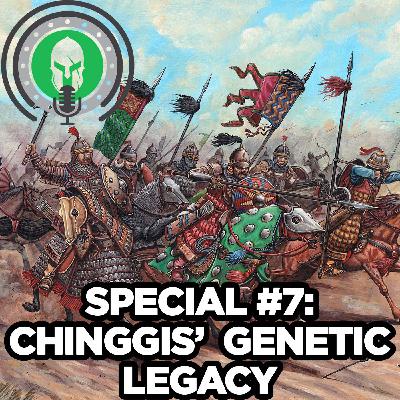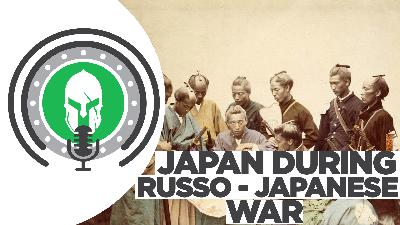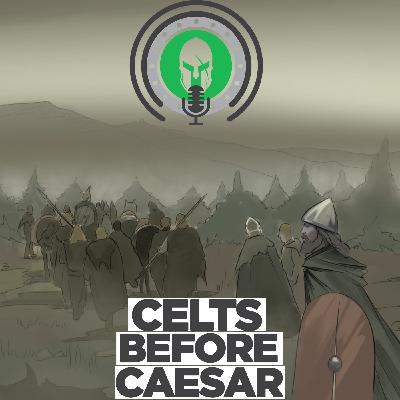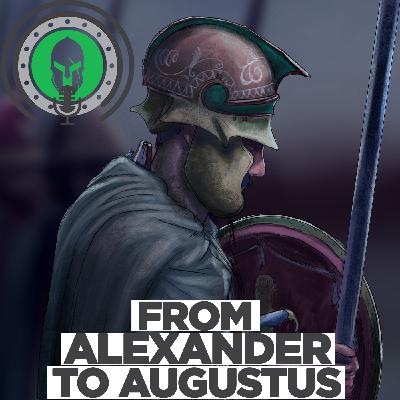History of the Mongols SPECIAL: Chinggis Genetic Legacy
Description
At the start of the twenty-first century, a study was released which brought the thirteenth century starkly into the present. A 2003 study led by Chris Tyler-Smith published in the American Journal of Human Genetics simply titled “The Genetic Legacy of the Mongols,” determined that an alarming number of men across Asia, from China to Uzbekistan, carried the same haplotype on their Y-chromosome, indicating a shared paternal lineage. 8% of the studied group, just over 2100 men from 16 distinct populations in Asia shared this haplotype, which if representative of the total world population, would have come out to about 16 million men. This was far beyond what was to be expected of standard genetic variation over such a vast area. The researchers traced the haplogroup to Mongolia, and with the BATWING program determined that the most recent common ancestor lived approximately 1,000 years ago, plus or minus 300 years in either direction. The study determined that this could only be the result of selective inheritance, and there was only man who fit the profile, who had the opportunity to spread his genes across so much of Asia and have them be continually selected for centuries to come; that was Chinggis Khan, founder of the Mongol Empire. Identifying him with the Y-Chromosome haplogroup, the C3* Star Cluster, the image of Chinggis Khan as the ancestor of 0.5% of the world population has become irrevocably attached to his name, and a common addition in the comment sections on any Mongol related topic on the internet will be the fact that he is related to every 1 in 200 men in Asia today. Yet, recent studies have demonstrated that this may not be the case, and that Chinggis Khan’s genetic legacy is not so simple as commonly portrayed. I’m your host David, and this is Kings and Generals: Ages of Conquest.
Inside each human being are the genes we inherit from our parents. Distinct alleles within the thousands of genes of our 23 chromosomes affect the makeup of our bodies, from our physical appearances to blood type. Each allele is inherited from our parents, who inherited from their parents, and so on, leaving in each human being a small marker of every member of their ancestry. Due to interbreeding and mixing over time, people living in a certain region will share alleles, given that various members of their community shared ancestors at some point. A collection of these alleles is a haplotype, and a group of similar haplotypes with shared ancestry is a haplogroup. Tracing specific haplogroups attached to the Y-Chromosome, for instance, allows us to trace paternal ancestry of selected persons. It was the haplogroup dubbed the C3*star cluster that the researchers identified as Chinggis Khan’s haplotype, though later research has redefined it to the C2* star cluster. Thus, while you may see it somewhat interchangeably referred to as C3 or C2, depending on how recent the literature you’re reading is. Whoever carried the markers on their chromosome associated with this haplogroup, according to the study, was therefore a descendant of Chinggis Khan. The lineage, it should be noted, does not start with Chinggis Khan; it is detectable in the ancestors of the Mongols dating back at least to the fifth century BCE, to the Donghu people in eastern Mongolia and Manchuria. It is found in high frequencies in populations which had close contact with Mongols from Siberia to Central Asia, as as the Buryats, Udeges, Evens, Evenks, Kazakhs, and in lower frequencies in places conquered by the Mongol Empire. As demonstrated by the 2003 study, a map of these haplogroups lines up rather neatly with a map of the Mongol Empire at the time of Chinggis Khan’s death.
The 2003 study found that 8% of the men sampled had high frequencies of haplotypes from a set of closely related lineages, the C2* star cluster. With the highest numbers of this cluster found in Mongolia, it was the logical origin point for this cluster. Its frequencies in so many populations of the former Mongol Empire seemed to suggest it spread with Mongol imperial expansion. The researchers therefore identified Chinggis Khan and his close male-relatives as the likely progenitors. While the public has understood this as Chinggis Khan and his family raping a massive percentage of the thirteenth century human population, this was not quite what the study implied. Rather, the selective marriage into the Chinggisid royal family, with each son having high numbers of children, and so on for generations due to prestige associated with the lineage, was the cause for the haplogroup’s spread.
The study decided that, since the haplogroups showed up in high frequencies among the Hazara of Afghanistan and Pakistan, and as they were deemed to be direct descendants of Chinggis Khan, then this must have meant no one else other than the Great Khan himself was the most recent common ancestor for this haplogroup. The high frequencies across Asian populations, an origin point in Mongolia, an estimated common ancestor approximately a thousand years ago, and association with the supposed Chinggisid Hazaras was the extent of the evidence the study had to make Chinggis Khan the progenitor.
When released, this study made headlines around the world. You’ll find no shortage of articles stating that “Genghis Khan was a prolific article,” with the underlying, thought generally unstated, assumption that these genes were spread by a hitherto unimaginable amount of rape, “backed up” by the medieval sources where Chinggis is described taking his pick of conquered women after the sack of a city. It’s a useful addition to the catalogue of descriptions to present the Mongols as mindless barbarians, with this study being essentially the scientific data to back up this presentation. It’s now become one of the key aspects of Chinggis Khan’s image in popular culture.
However, as more recent studies have demonstrated, there are a number of problems with this evidence presented in the 2003 study. Firstly, later researchers have pointed out how indirect the evidence is for the connection of Chinggis Khan to the C2 lineage. The estimates for the most recent common ancestor can vary widely depending on the methods used; while some estimates can place a figure within Chinggis Khan’s epoch, other estimates put the most recent common ancestor for the C2* cluster over 2,000 year ago. Even going by the 2003 study, it still gives a 600 year window for the most recent common ancestor, who still could have lived centuries before or after Chinggis Khan.
One of the most serious assumptions in the study was that the Hazara of Afghanistan were direct descendants of Chinggis KhanThis is an assumption which rests more on misconception than medieval materials. In fact, the thirteenth and fourteenth century sources indicate that Chinggis Khan spent only a brief time in what is now Afghanistan, only from late 1221 and throughout much of 1222, which he largely spent campaigning, pursuing Jalal al-Din Mingburnu and putting down local revolts before withdrawing. There is no indication that a Mongol garrison was left in the region by Chinggis, and it is not until the 1230s that Mongol forces returned and properly incorporated the region into the empire. Still, it was not until the end of the thirteenth century were Chinggisid princes actually staying in the region, when Chagatayid princes like Du’a’s son Qutlugh Khwaja took control over the Negudaris. The sources instead describe waves of Mongol garrisons into Afghanistan which began almost a decade after Chinggis Khan’s death, from the initial tamma garrisons under Ögedai Khaan’s orders to Jochid troops fleeing Hulegu to Afghanistan in the 1260s. Later, from the late fourteenth century onwards, Afghanistan was the heart of the Timurid realm, and while the Timurids shared some descent from Chinggis through marriage, it’s not exactly the process which would have led to high percentages of Chinggisid ancestry.Together, this strongly suggests that the Hazara would not bear Chinggisid ancestry in any considerable quantity.
Perhaps most prominently, there is little evidence that connects the C2* star cluster to known descendants of Chinggis Khan. The fact that no tomb of Chinggis Khan or any other known members of his family has been found, means that there is no conclusive means to prove what haplogroups he possessed. Without human remains which undeniably belong to one of his close male relatives or himself, Chinggis Khan’s own haplogroup can not ever be reliably identified. Most royal Chinggisid lineages in the western half of the empire, such as that of the Ilkhanate or Chagatais, disappeared long before the advance of genetic sciences. You might think that looking in Mongolia, you’d find a lot of Chinggisids running about, but this is not the case. Even during the empire, many members of the Chinggisid family were spread across Asia, leaving by the end of the fourteenth century largely lines only from his brothers, and of his grandsons Ariq Böke and Khubilai. In the fifteenth ce















